“If science is expected to grow so great, both in the comprehensiveness of its subject and also in depth, that the human mind will not be able to embrace it, that the life span of man will not be long enough to penetrate to its fringes in time to enlarge it, could several people not form a team and accomplish jointly what no single person can accomplish? Instead of returning with Shaw to Methuselah, can we find a new way to enlarge the capacity of human intellect by the juxtaposition of several individual intellects rather than by extending a single one?”
E.P. Wigner: The Limits of Science, 1950
Family
He was born in Budapest on 17th November, 1902, in the house 76 Király utca, as a son of Antal Wigner, a leather tanner from Kiskunfélegyháza and Erzsébet Einhorn from Kismarton. Mostly he had a happy childhood: his parents lived in a harmonious marriage, and he loved his two sisters, Berta and Margit (who later became the wife of Paul Dirac). After his moving into the US, in 1936, he met his first wife, a charming physics student, Amelia Frank, who died in 1937. In 1941 he married Mary Annette Wheeler, a physics professor, whom he lived together until her death in 1979. The then 77-year-old Eugene Wigner married Eileen Claire Patton, a close friend's widow. He died in 1995, in Princeton. He had two children from Mary Annette Wheeler, David and Martha. His son, David, teaches mathematics at the University of California, Berkeley. His daughter, Martha, works at the Chicago area transportation system.
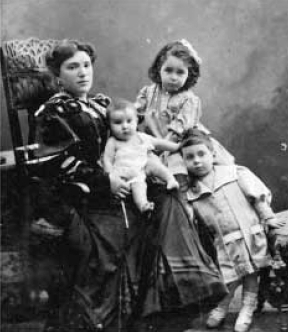
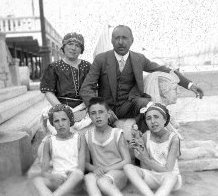
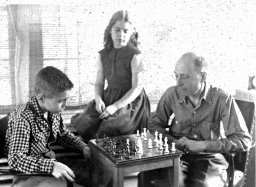
E.P.Wigner and his family in 1905 and around 1910. E.P. Wigner with their children.
Studies determining a life
He graduated in the Fasor Lutheran High School, where two determinative teachers started him in his career, László Rátz, teacher of mathematics, and Sándor Mikola, teacher of physics. Until the end of his life, Wigner thought of these two eminent teachers with great respect and gratitude.
After high school graduation, at the request of his father he enrolled at the Budapest University of Technology, Faculty of Chemical Engineering, but after half a year he continued his chemical engineering studies at the Berlin Technische Hochschule, beside which he performed his laboratory practice at the Max- Volmer -Institut für Biophysikalische und Physikalische Chemie. Although he studied chemistry, he was interested in physics all along, beside his studies he attended the colloquia of the German Physical Society, in which participated such great scholars, as Max Planck, Max von Laue, Rudolf Ladenburg, Werner Heisenberg, Walther Hermann Nernst, Wolfgang Pauli, and - last but not least - Albert Einstein. Here he met with Dénes Gábor and Leo Szilárd as well.
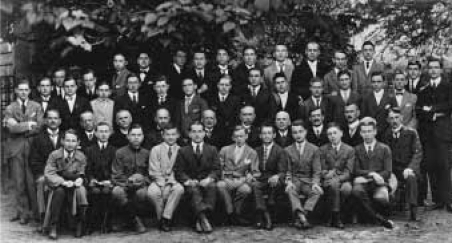
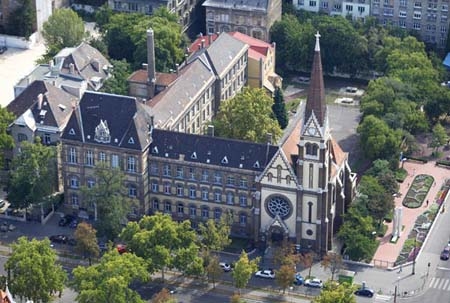
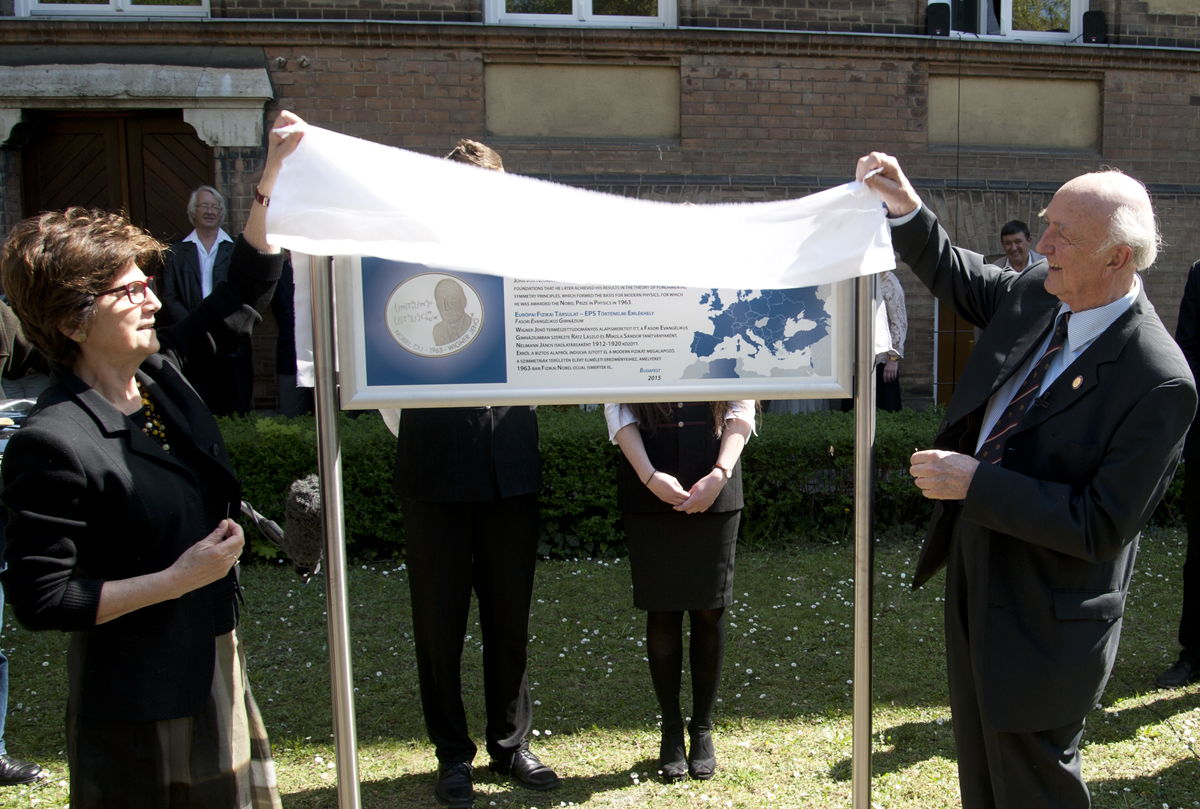
The class graduated in 1919, in the firt line 3rd from rihgt is Eugene Wigner, the building of the high school, and the memorial table inauguration in 2015 , near the school, wich became the Historic Site of the European Physical Society.
The chemical engineer physicist
In 1930 he wrote his book on "Group Theory and its application on the quantum mechanics of atomic spectra", which was translated into several languages.
After he decided to stay permanently in America in 1933, he turned to the new science of nuclear physics. As a forerunner of the new area, he recognized the short-range nuclear forces (1933), that nuclear forces are charge independent (1937), the resonant capture of neutrons in the energy level of nuclei, and the "magic numbers" revealing the shell structure of nuclei.
By combining the chemist and the physicist in himself, Wigner played a pioneering role in the creation of plutonium production. He calculated and designed the world's first atomic reactor, and he also designed the first water-cooled nuclear reactors. He was the first who proposed the using of water, too, to ensure the safety of slowing down the neutrons The majority of the world's nuclear power plants are still working on this concept.with his 37 patents he was very actively involved in the development of nuclear reactors, and now he is considered the world's first nuclear reactor engineer.
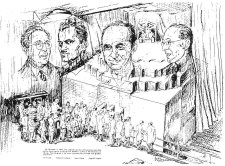
Charcoal drawing created with the moderator graphite used in the first nuclear chain reaction (from left: Leó Szilárd, Arthur Compton, Enrico Fermi and Eugene Wigner).
In 1960 he won the "Atom for Peace" award, and in 1963 he received a shared Nobel Prize in Physics "for contributing to the theory of atomic nuclei and elementary particles, particularly through the discovery and application of the fundamental symmetry principles". In 1972, he receives the Albert Einstein prize for his achievements in theoretical physics.
In addition to his research activities he taught at numerous universities in the world, in 1977 was elected an honorary member of the Eötvös Physical Society, Hungary, in 1987 he became the honorary doctor of Loránd Eötvös University, Hungary, and in 1988 he became an honorary member of the Hungarian Academy of Sciences.
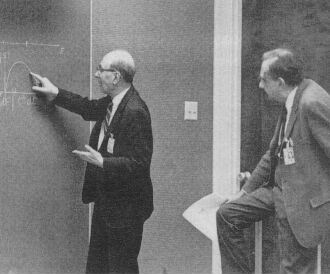
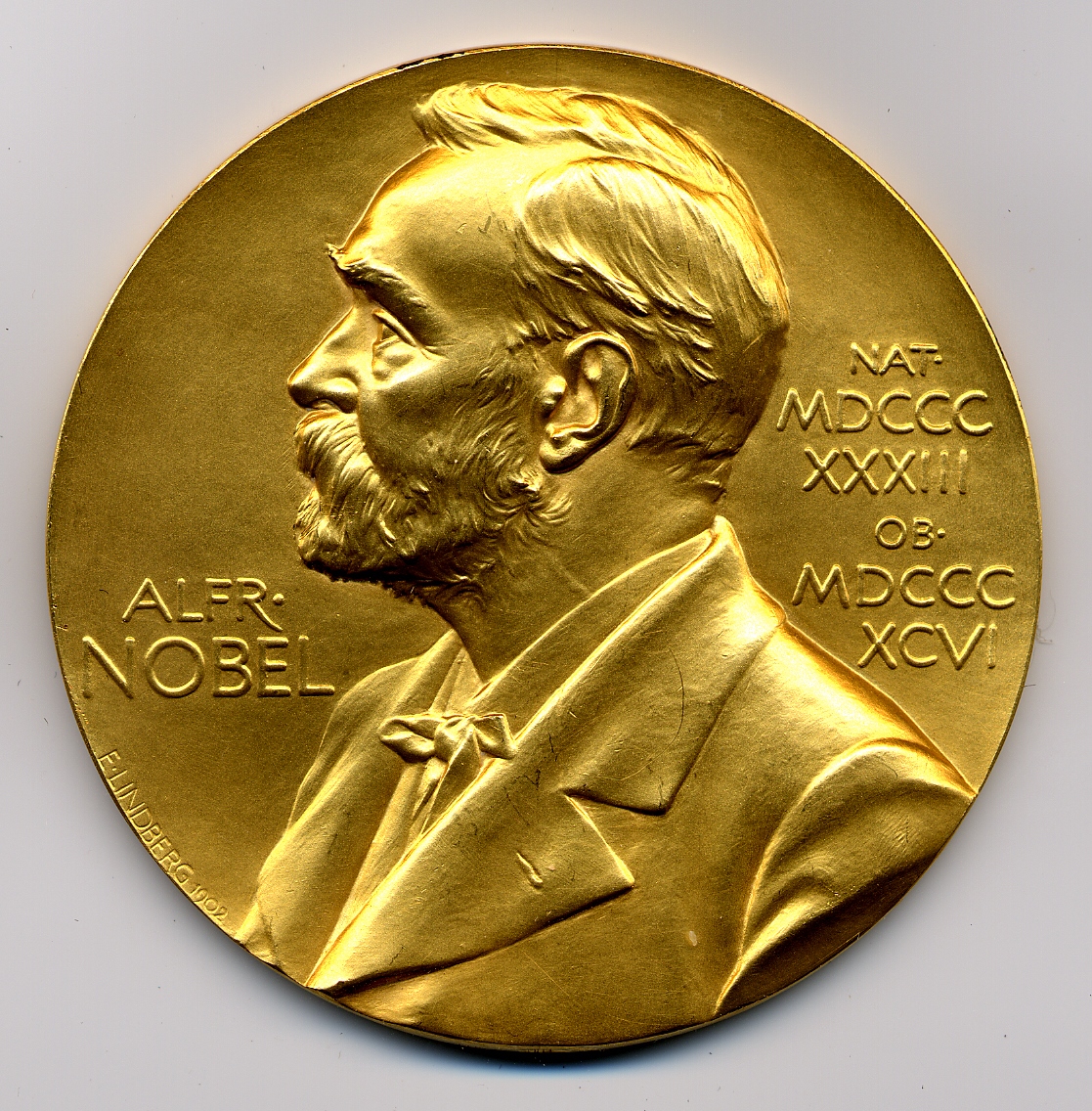
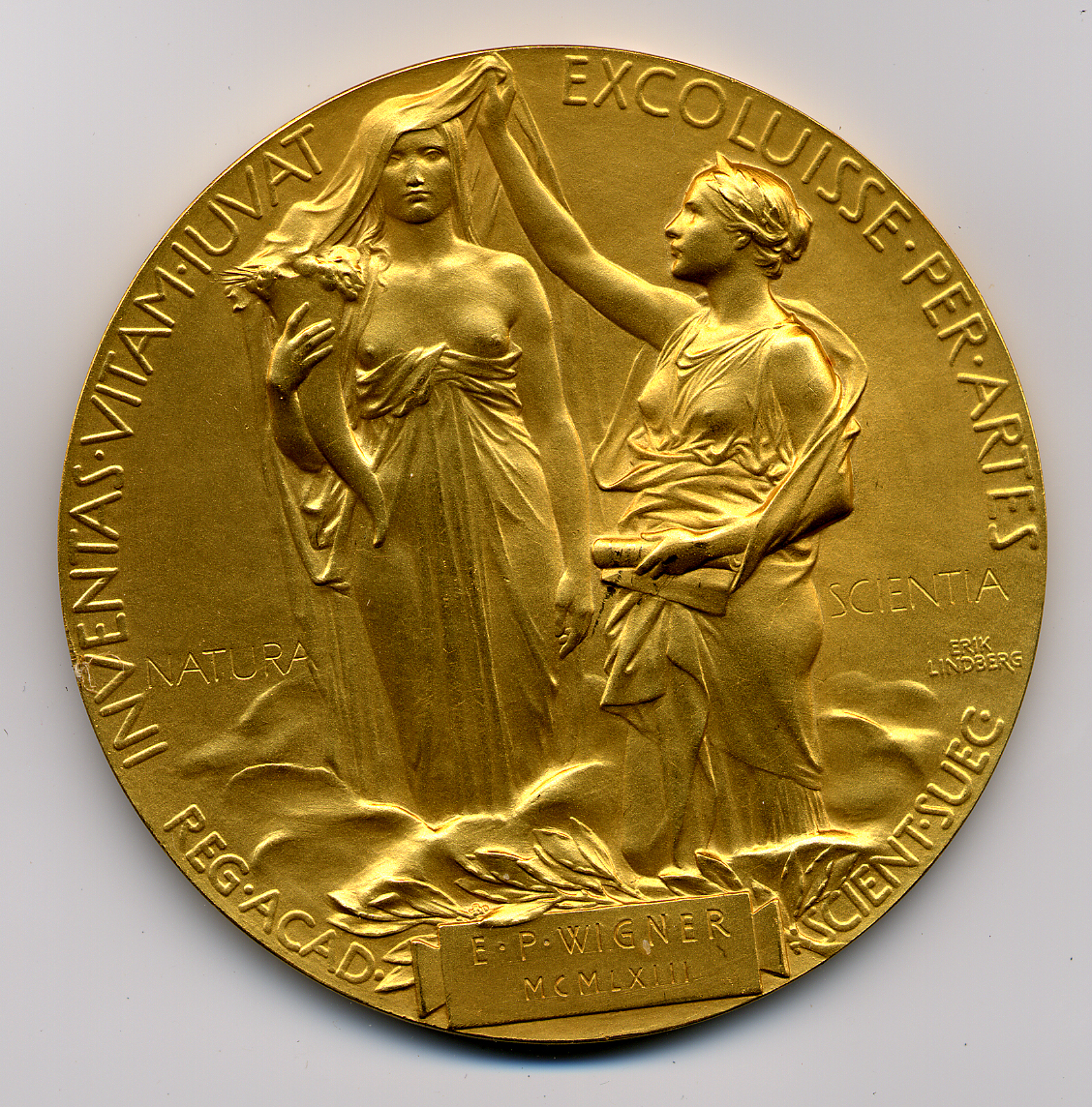
Eugene Wigner with EdeTeller, and Nobel Prize of Eugene Wigner
The humblest man in the world
"Eugene Wigner, who made the most for the nuclear theory and nuclear reactor development, is so polite that he created the legend of Hungarian courtesy. "(Edward Teller)
From the memoirs of contemporaries we know that Wigner was an exceptionally modest, calm and empathetic person. For example, Bálint Telekdi remembers for a common drive with Wigner: "He drove his vehicle in Princeton, when from a side street another car cut ahead of him suddenly completely irregularly - he was barely able to fend off the accident. He exclaimed: - Go to hell - then he added -, please!"
Once, at the end of a lecture a member of the audience came forward to ask a question. After listening to him, Wigner replied, "My name is Mr. Eugene Wigner." The interviewer repeated the question in surprise. He received the same answer, "My name is Mr. Eugene Wigner." Finally, someone managed to unlock the impasse by pointing out that Eugene was simply embarrassed because he did not know the student's name. He was too polite to ask, so presented himself in the hope that he might learn it.
Eugene Wigner left a legacy of thought-provoking and beautiful thoughts from a wide variety of life.
"What a pity that we do not remember the day we were born. What a nice memory it would be! But as soon as I realized that I'm alive, the world around me made me happy and intrigued. I silently thanked my parents that they gave birth to me."
"It deeply bothers me that we have not received a message yet from alien civilizations. It is likely that there are habitable planets, peoples or other similar creatures live on them. It is also likely that some of the earlier started civilizations has gained more knowledge than we. Therefore it is surprising that they have not contacted us. I don't think of a direct visit, since the distances are huge, but of telecommunications. I'm surprised there is only one Earth and one species that is curious. I can think of two solutioons to the problem. One possibility is that in the past they have also developed a civilization, science, technology, but they started an arms race, and destroyed themselves, and all their world . If this is an inevitable phenomenon of a civilization, it might explain the silence. Another option is that they have developed the science, which raised their standard of living. But the luxury made them lazy, they stopped reading books, just stared at the TV. Maybe physics became too complicated for them, they deemed it boring, they lost their curiosity and stopped science. Maybe that's why peoples that precede us with 50-100 years are not interested in establishing a relationship with us. Nevertheless, I hope that my fear about the end of the story is wrong."
"The full meaning of life, the meaning of all human desires combined is a fundamental mystery that is beyond our understanding. While I was young, I was angry because of this state of things. Today I made my peace with it. I feel even honored that I have something to do with this mystery."
"If science sometimes becomes so high that human mind will not be able to grasp the whole of it, and human life will be too short, to reach the frontier lines, and labour on science's augmentation, could not it create more human research groups, and could not perform by their combined effect of what one person can not perform? ... Opportunities for co-operational research should be studied in much greater detail than before, because so far they are the only visible hope of the rejuvenation of science, when it will increase too large for one person."
A film with Eugene P. Wigner from 1972:
Wigner 111 Conference
The Wigner Research Centre for Physics in collaboration with the Institute for Nuclear Research, and the Centre for Energy Research of the Hungarian Academy of Sciences organized an international symposium "Colourful and Deep" for Eugene Wigner, a Nobel Prize-winning hungarian-born physicist for the occasion of his 111th birthday and the 50th anniversary of receiving his price. By the event we honoured our eponym's intellectual performance, and internationally outstanding work.
For further informations please visit the homepage of te symposium.
Eugene Wigner Prize
In the summer of 1999 an agreement was reached between the MTA and the Paks Nuclear Power Plant to found a prize, which is awarded each year for researchers, who created something lasting in the field of nuclear energy and Hungarian physics. The award is named by Eugene Wigner, and each year it is handed out at the Festival of Hungarian Science.
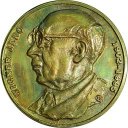
E.P.Wigner memorial coin
On 17. November 2013, the National Bank of Hungary releases a memorial coin to honour the 5öth anniversary of Eugene Wigner's Nobel Prize. The silver coin of 3,000 Ft face value, has an oval shape, was planned by Fanni Vékony, and is a member of the Hungarian Nobel laureates series.
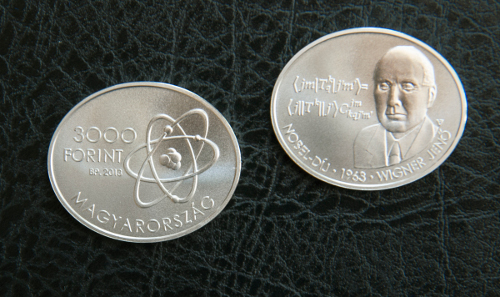
Sources:
Biography and excerpts: Major World, Wikipedia
Excerpts: Egy magyar marslakó: Wigner Jenő válogatott írásai (A Hungarian Martian: selected works of Eugene Wigner, László Ropolyi, Typotex, 2005), A tudomány határai (Frontiers of Science, Eugene Wigner, 1950)
Images: National Technical Information Centre and Librar
National Bank of Hungary: Memorial coin to honour the 5th anniversary of E. Wigner' Nobel Prize
legifoto.com
Page was assembled by Csilla Dovicsin-Péntek and Béla Selmeci



